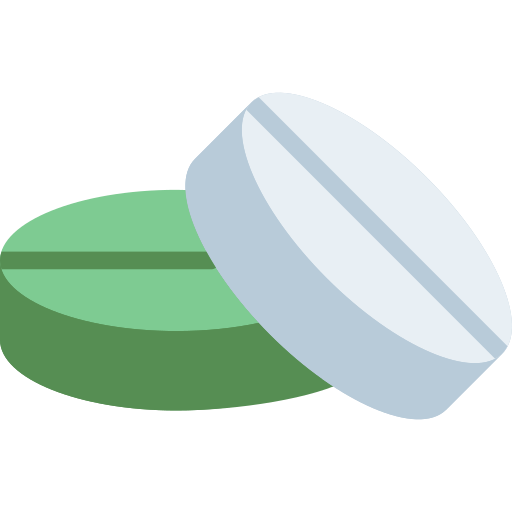
Pentoxifylline
400 mg
Beximco Pharmaceuticals Ltd.
Product Details
Description
Pentoxifylline and its metabolites improve the flow properties of blood by decreasing its viscosity. In patients with chronic peripheral arterial disease, this increases blood flow to the affected microcirculation and enhances tissue oxygenation. The precise mode of action of pentoxifylline and the sequence of events leading to clinical improvement are still to be defined. Pentoxifylline administration has been shown to produce dose-related hemorrheologic effects, lowering blood viscosity, and improving erythrocyte flexibility. Leukocyte properties of hemorrheologic importance have been modified in animal and in vitro human studies. Pentoxifylline has been shown to increase leukocyte deformability and to inhibit neutrophil adhesion and activation. Tissue oxygen levels have been shown to be significantly increased by therapeutic doses of pentoxifylline in patients with peripheral arterial disease.
Pentoxifylline must not be used: in patients with hypersensitivity to pentoxifylline, other methylxanthines or any of the excipients of Pentoxifylline. in patients with massive bleeding (risk of increased bleeding). in patients with extensive retinal bleeding (risk of increased bleeding).
These adverse reactions have been reported in clinical trials or post-marketing- Investigations: Transaminases increased (Transaminase elevation), Blood pressure decreased (Fall in blood pressure) Cardiac disorders: Arrhythmia (Cardiac arrhythmia), Tachycardia, Angina Pectoris Blood and lymphatic system disorders: Thrombocytopenia (Thrombopenia), Leucopenia/neutropenia Nervous system disorders: Dizziness, headache, meningitis aseptic (Aseptic meningitis) Gastrointestinal disorders: Gastrointestinal disorder (Gastrointestinal complaints), Epigastric discomfort (Gastric pressure), Abdominal distension (Fullness), Nausea, Vomiting, Diarrhoea, Constipation, Hypersalivation Skin and subcutaneous tissue disorders: Pruritus, Erythema (Reddening of the skin), Urticaria, Rash Vascular disorders: Hot fush (Flushes), Haemorrhage (Bleedings) Immune system disorders: Anaphylactic reaction, Anaphylactoid reaction, Angioedema (Angioneurotic edema), Bronchospasm, Anaphylactic shock (shock) Hepatobiliary disorders: Cholestasis (Intrahepatic cholestasis) Psychiatric disorders: Agitation, Sleep disorder (Sleep disturbances)
Insufficient experience has been gained concerning use in pregnancy. Therefore, it is recommended that Pentoxifylline is not used during pregnancy. Pentoxifylline passes into breast milk in minute quantities. Because insufficient experience has been gained, the physician must carefully weigh the possible risks and benefits before administering Pentoxifylline in breast-feeding women.
At the first signs of an anaphylactic/anaphylactoid reaction, Pentoxifylline must be discontinued or the infusion be halted immediately, and a physician must be informed. Particularly careful monitoring is required: in patients with severe cardiac arrhythmias in patients with myocardial infarction in hypotensive patients in patients with impaired renal function (creatinine clearance below 30 ml/min) in patients with severely impaired liver function in patients with increased bleeding in patients treated concomitantly with pentoxifylline and anti-vitamin K or platelet aggregation inhibitors in patients treated concomitantly with pentoxifylline and antidiabetic agents in patients treated concomitantly with pentoxifylline and ciprofoxacin in patients treated concomitantly with pentoxifylline and theophylline
Hepatic impairment: A dose reduction- guided by individual tolerance- is necessary in patients with severely impaired liver function. Renal impairment: In patients with impairment of renal function (creatinine clearance below 30 mL/min) a dose reduction by approx. 30% to 50% may be necessary guided by individual tolerance. Other: Treatment must be started at low-dose levels in hypotensive patients or patients whose circulation is unstable as well as in patients, who would be at particular risk from a reduction in blood pressure (e.g. patients with severe coronary heart disease or relevant stenoses of blood vessels supplying the brain); in such cases, the dose must only be increased gradually.
Initial symptoms of acute overdose with pentoxifylline may be nausea, dizziness, tachycardia or a fall in blood pressure. Furthermore, signs such as fever, agitation, flush, loss of consciousness, areflexia, tonic -clonic convulsions and as a sign of gastrointestinal bleeding - coffee-ground vomiting may occur. No specific antidote is known. If ingestion has only just taken place, attempts may be made to prevent further systemic absorption of the active ingredient by primary elimination of the toxin (e.g. gastric lavage) or by delaying its absorption (e.g. activated charcoal).
Peripheral Vasodilator drugs: Intermittent Claudication
-
Support 24/7
Call us anytime -
100% Safety
Only secure payments